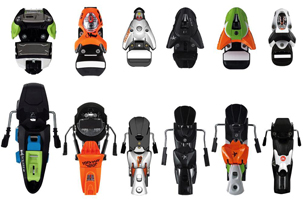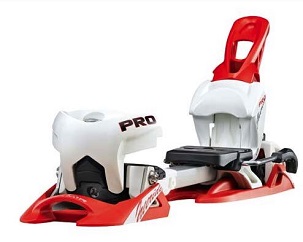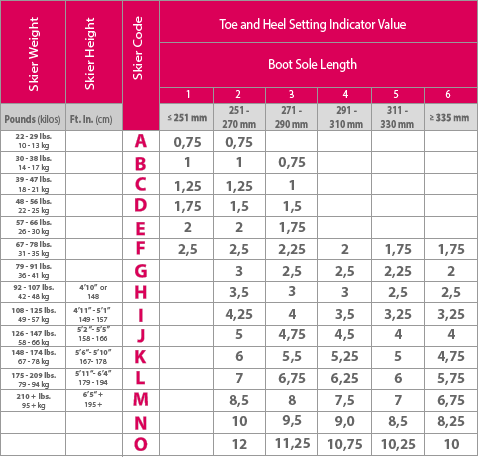Ski bindings setting
Alpine ski bindings
Because the alpine ski bindings connect your boots to your skis, choosing the right pair is essential in putting together the ski set.
There are two main things to consider when selecting alpine ski bindings. The maximum din setting you need and the width of the
ski you plan on using.
To reduce the risk of injury, Alpine ski bindings are designed to release your boot in the event of a crash. A bindings din setting is
the indication of how easily the boot release from the binding. The higher the din setting is, the greater the amount of force required
to initiate the release from feet. You want to consider your weight and ability to determine the correct din setting for you. Generally,
the heavier and more advanced skier will require a higher DIN setting. Well lighter and less experienced skiers will benefit from a lower
din setting.

Alpine ski bindings selection
You also want to consider the underfoot width of the ski you plan on mounting the binding to. The wider the ski is, the wider the binding
break will need to be. Most bindings manufacturers offer several different break widths to accommodate different sizes of skis.
And remember, it's always a good idea to have your bindings mounted, adjusted, and serviced by a certified ski binding technician.

Ski binding
DIN settings chart
Release Force Setting (DIN), short for Deutsches Institut für Normung (German Institute for Standardization) https://www.din.de/en, is
the industry-adopted scale of release force settings for ski bindings.
The DIN setting is calculated based on your boot sole length, age, weight, height, and ability level when your
bindings are mounted on your skis. The higher the DIN, the higher the force required to release from your bindings. See the DIN chart below.

DIN settings chart


